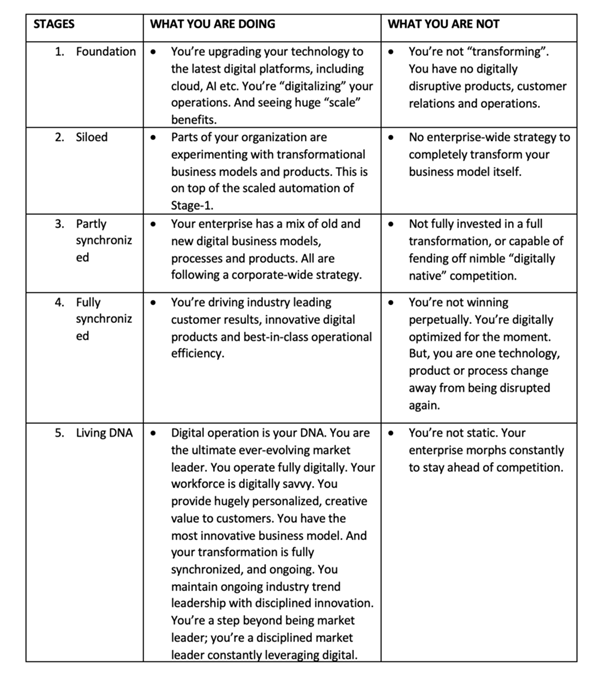There is a Critical Difference
Going about transforming an existing organization can be an exhausting challenge, especially given the immense power of digital technologies. Digital technologies can enable so many things. Should you go after a new business model?
Or try a new idea extension of your current business model? Perhaps you should pursue a digitally-enabled version of your existing business? The conventional wisdom here is to create a separate digital strategy to answer these questions. My experience shows that this is a mistake.
Instead, I recommend re-doing your current business strategy to fully transform using digital capabilities. The distinction is more than subtle. It’s the difference between “doing” digital and “becoming” digital.
This goal of “becoming” digital is key to achieving perpetual digital transformation. An organization can “do” digital as part of a one-time transformation, but to achieve ongoing market leadership it needs to “become” digital.
The organization has reached the “become” stage when digital is the living DNA of its operation and its organization. A new digital strategy may deliver a one-time Stage-4 transformation, but it is unlikely to get you to an ongoing Stage-5 transformation. At Stage-5, the enterprise has “become” digital.
A useful way to distinguish between the five stages of transformation is to think of what each stage is not. The following table illustrates this.

What Should You Do?
Set your digital transformation goals in terms of core business outcomes. Given the high stakes involved in digital disruption, we cannot afford to confuse “activities” around digital transformation with achieving the ongoing DNA of a truly digital organization. That distinction could very well be the difference between success or failure in the fourth industrial revolution.
This is an excerpt by Tony Saldanha from his best-selling book, “Why Digital Transformations Fail.”


![Inixia[NewColours]2024-01 (1) Inixia[NewColours]2024-01 (1)](https://staging.inixia.com/wp-content/uploads/elementor/thumbs/InixiaNewColours2024-01-1-qowqudqig672zrzyy3hxjt748n9wmynyirm99mb7rk.png)
![Inixia[WHITE]2024 Inixia[WHITE]2024](https://staging.inixia.com/wp-content/uploads/elementor/thumbs/InixiaWHITE2024-qqi5gea1xpgz1kljicoh6l3znfun0n86ffdcswyjb6.png)